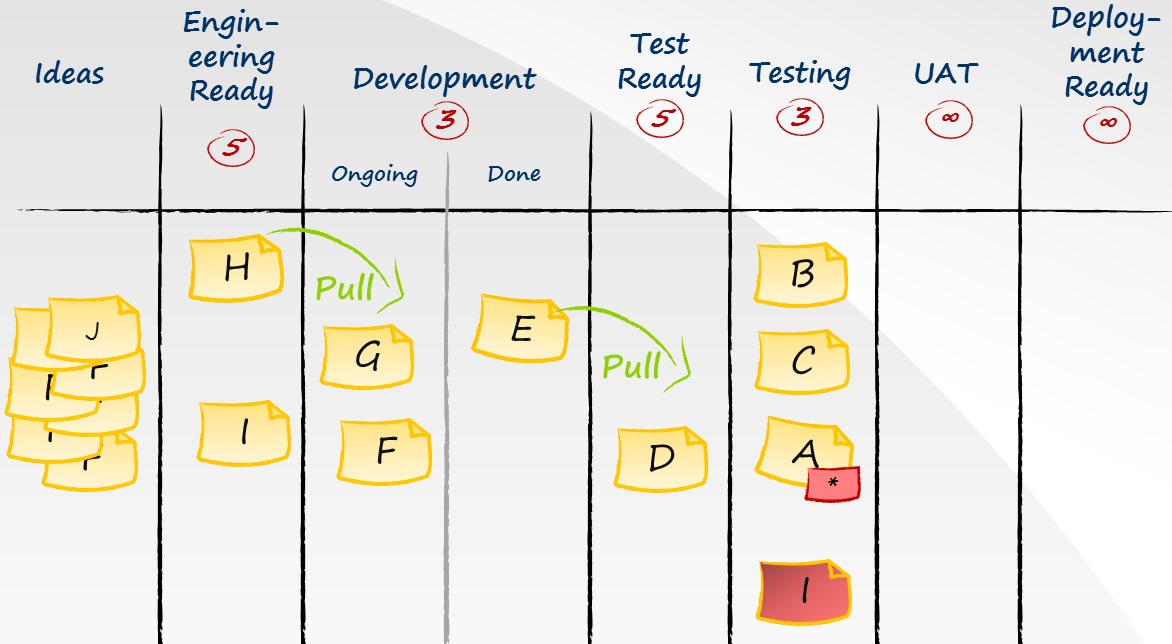

Kanban is often a vaguely understood term. Two professionals talking about Kanban usually have a different level of understanding about it, despite both deriving good practical value from their knowledge. Let’s take a closer look at the different meanings of Kanban – from the very basic to the most powerful.
So, what is Kanban – a card, a board, a system or a method?
The short answer is – Kanban is all of them.
The word ‘Kanban’ has its origin in both Hiragana (Japanese language) and Kanji (Chinese language). In Hiragana, it means a ‘Signal card’ while in Kanji it means a ‘Sign’ or ‘Large visual board’.
Beyond the etymology, ‘Kanban’ as a concept was popularized by Taiichi Ohno (former Toyota vice president) who took inspiration from how supermarkets stock their shelves and promoted the idea of Just-in-Time manufacturing in Toyota – using Kanban cards as a signal between two dependent processes to facilitate smoother – and just in time – the flow of parts between them. With time, the idea of Kanban evolved to be more than just a signal card. First in the manufacturing world, and now in the IT industry, a ‘Kanban System’ is characterized by two key features:
A team that uses the Kanban System to track and manage the flow of work may often use a board to visualize the items that are in progress. Such a board is called the ‘Kanban Board’. Those practising Scrum may think of the Scrum board as a simplified version of a Kanban Board.
Now, what about the Kanban method?
‘Kanban Method’ is a term coined and popularized by David J Anderson who, over the past ten years, has evolved the Kanban concept into a management method to improve service delivery and evolve the business to be ‘fit for purpose’. It is not a project management method or a process framework that tells how to develop software but is a set of principles and practices that help you pursue incremental, evolutionary change in your organization. In other words, it will not replace your existing process, but evolve it to be a better ‘fit for purpose’ – be it Scrum or Waterfall.
The six key practices outlined in the Kanban Method include:
Please visit David’s blog to get a deeper insight into about Kanban principles and practice.
While the idea of Kanban has evolved from a signal card to a management method, its emphasis on visualization and pull-based work management has remained intact.
To know why Kanban is important? Click here.
In the end, let’s attempt to link different Kanban terms together. The Kanban Method is the most powerful version of the Kanban concept that uses Kanban board (among several other things) and helps teams implement pull-based work management systems while pursuing an evolutionary change that enhances their agility.
Please browse our Kanban page below to learn about Kanban training options (in affiliation with Kanban University) if you wish to gain expertise on Kanban Method and/or wish to evaluate its applicability to your team/organization.
http://www.izenbridge.com/kanban/kanban-system-training-kmp-1/
You can also subscribe to our YouTube channel which has 40,000+ subscribers from more than 50 countries.
For more information, check out our collection of Kanban Videos.
Still, having any questions in mind? Feel free to write to us in the comments section below.
No Trainings found